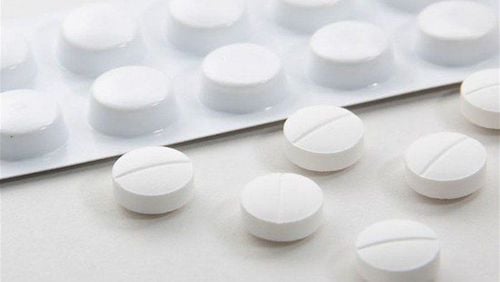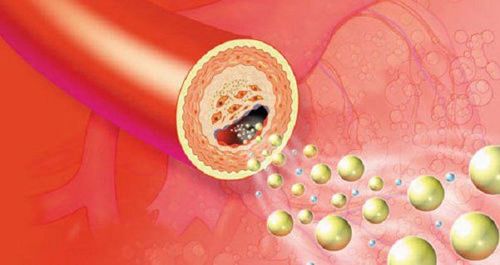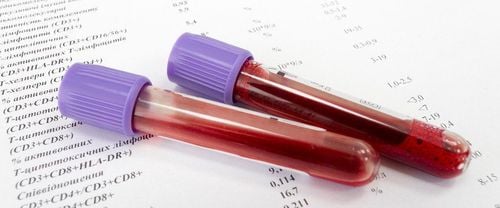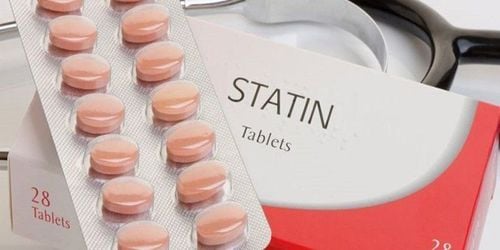This is an automatically translated article.
The article was professionally consulted by Specialist Doctor II Ho Viet Le Diem - General Internal Medicine - Department of Examination & Internal Medicine - Vinmec Central Park International General Hospital.Dyslipidemia is one of the important risk factors for cardiovascular diseases. However, unlike age and sex, this is a completely modifiable risk factor. Adjusting blood fat levels is a way to prevent diseases, ensure quality of life and prolong life in the future.
1. What is dyslipidemia?
Dyslipidemia is a condition in which levels of total cholesterol, triglycerides, low-density lipoprotein (LDL-C) are higher and/or high-density lipoprotein (HDL-C) levels are lower than normal values. normal values in plasma.Along with hypertension, ischemic heart disease, diabetes mellitus; This is a fairly common chronic metabolic disorder, increasing the process of atherosclerosis, damage to target organs such as the heart, brain, and kidneys.
2. Signs of dyslipidemia
Dyslipidemia is a biological process that occurs after a long time without being recognized. Therefore, this condition rarely has characteristic symptoms. Most of the clinical manifestations of dyslipidemia are detected only when high levels of blood lipid components persist or cause complications in organs such as atherosclerosis, myocardial infarction, stroke. brain vessels, yellow rashes on eyelids, elbows, knees,... In addition, when triglyceride levels are too high in the blood, the plasma becomes cloudy like milk and can cause acute pancreatitis, affecting the lungs. live. However, in most cases, dyslipidemia is often detected late in many different pathologies of the cardiovascular - endocrine - metabolic group of diseases.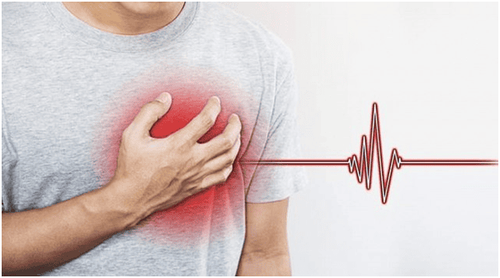
Rối loạn Lipid máu có thể gây biến chứng ở tim
2.1. External manifestations of hyperlipidemia
Corneal arc: Pale white, circular or incomplete, located around the iris. This sign is usually valid for people under the age of 50. Erythema: Located on upper or lower eyelids, localized or scattered. Yellow tendon tumor: Located in the extensor tendon of the fingers, the heel tendon and the position of the knuckles of the fingers. Subperiosteal jaundice: Found in the anterior tibial tubercle, on the bony end of the elbow process, less commonly than the tendinosis. Jaundice: Located on the elbow or knee. Palmar erythematous form: Distributed in the folds of the fingers and palms.2.2. Visceral manifestations of hyperlipidemia
Atherosclerosis: This is the most common manifestation and also the most worrisome manifestation of elevated lipoproteins. This condition is often unknown, with no prior dyslipidemia and may be associated with other risk factors such as smoking and diabetes. Injury to the arteries in the heart causes myocardial infarction or ischemic heart disease, in the brain causes cerebral infarction with slurred speech, weakness in limbs,... Retinal lipidosis: Visible when ophthalmoscopy , seen in situations of high blood triglycerides. Fatty liver: Partial or total liver, detected by ultrasound or computed tomography, often with hypertriglyceridemia. Acute pancreatitis: Common when triglycerides are over 10g/L, patients have severe abdominal pain, vomiting a lot, sometimes accompanied by fever.3. Tests to detect dyslipidemia
Dyslipidemia is determined mainly by blood tests. Because blood lipid levels are related to meals, the ideal time to do this is when the patient has fasted for 12 hours, usually in the morning after waking up.A complete blood lipid bilan test kit includes 4 components: total blood cholesterol, HDL - C, LDL - C and triglycerides. Abnormal thresholds and disturbance levels for each indicator are presented in the following table:
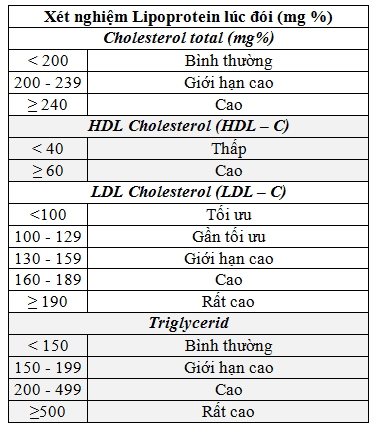
Bảng mức độ rối loạn lipid máu.
4. Consequences of dyslipidemia
Similar to the manifestations of dyslipidemia, the consequences of this disease also manifest indirectly in other diseases. When blood fat levels are high, it is the arterial system that suffers the most. Accompanied by a large blood pressure factor, the endothelium in the arterial lumen is damaged and hardened, deposited atherosclerotic plaques, and reduced elasticity. When a patient is hospitalized because of chest pain or mouth distortion, hemiplegia, is examined and diagnosed as myocardial infarction or stroke, the cause is found to be atherosclerosis, the real consequence of lipid disorders. new blood is detected. And at this point, it's too late to save.In the case of increased triglycerides causing acute pancreatitis, the patient may be hospitalized with severe abdominal pain, vomiting, sometimes hypotension, respiratory failure, kidney failure. Treatment requires dialysis and plasma exchange and has a poor prognosis and high mortality rate.
>> See more: Drugs to treat dyslipidemia
Almost like other metabolic diseases, dyslipidemia does not manifest itself but is a silent cause of death through diseases. cardiovascular disease, stroke, chronic kidney failure. Therefore, periodic medical examination and blood lipid test every 6 months to 1 year with the general health examination program at Vinmec helps in early detection and timely treatment, which is a way to prevent disease for yourself and your family. family.
Please dial HOTLINE for more information or register for an appointment HERE. Download MyVinmec app to make appointments faster and to manage your bookings easily.




